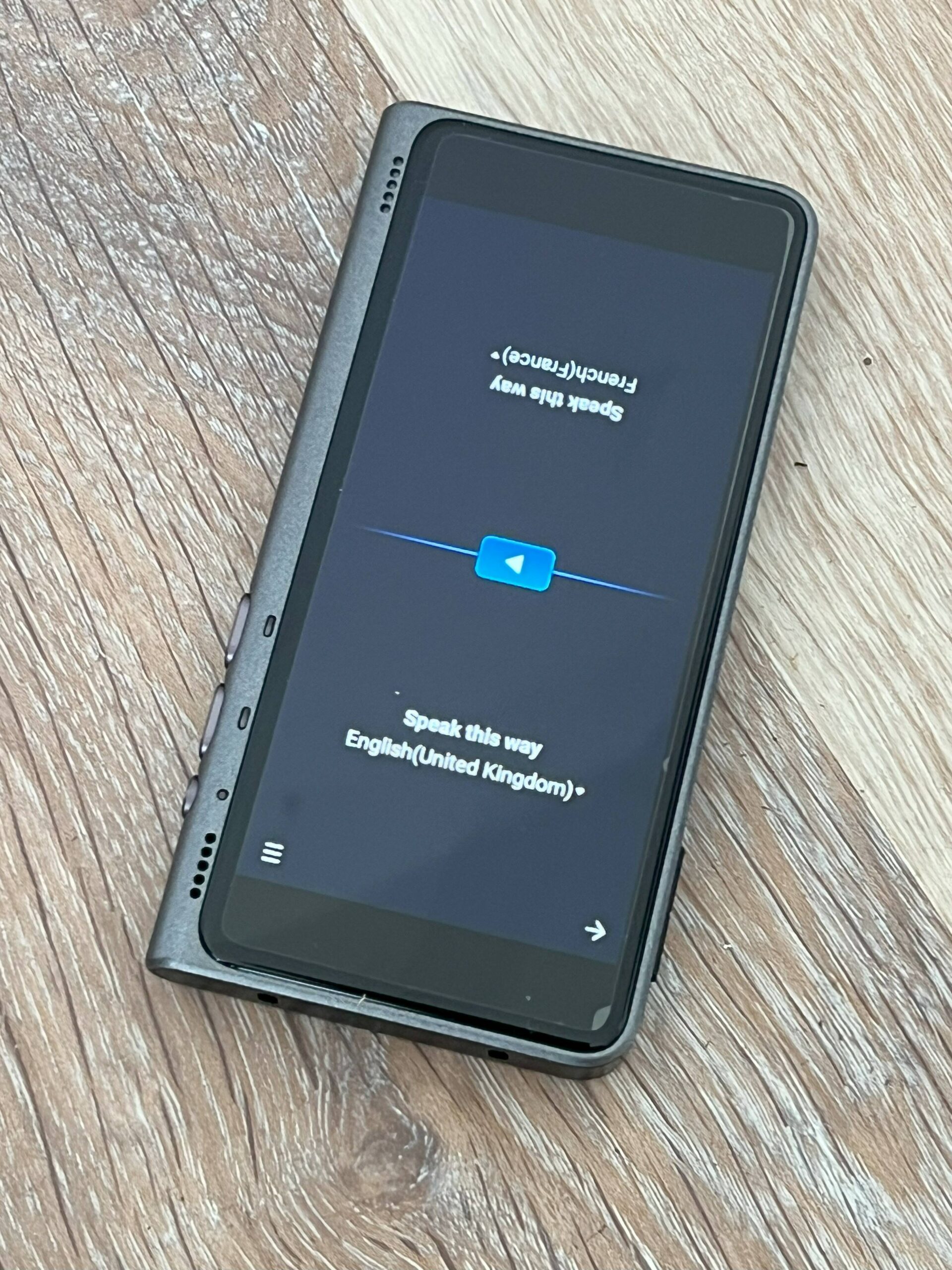hands on Timekettle’s lightweight T1 interpreter has received the AI treatment and will now perform offline translations. But unless you have deep enough pockets, both figuratively and literally, for another device and a frequent need for translation, it’s not for you.
Timekettle has made a name for itself with its range of translation devices, from earbuds to hefty blocks of plastic and metal that could double as an offensive weapon – see our review of the X1 AI Interpreter hub for an example of the latter.
The T1 is sized more along the lines of a small, slightly thick smartphone. Think more iPhone 4 than iPhone 16.
It weighs in at 4.1 ounces (115g), measures 4.6 x 2.3 x 0.4 inches (116.8 x 58.6 x 11.2 mm), runs Android 10, and has a 1,500 mAh battery. That’s smaller but a little thicker than a mainstream smartphone such as the iPhone 16, which tips the scales at 6 ounces (170g) and measures 5.8 x 2.8 x 0.3 inches (148 x 72 x 8 mm).
The 4-inch, 540 x 1080 screen won’t win any awards for display, but it is bright and clear, and there’s a non-expandable 4 GB of storage onboard. The latter could present a problem, considering the offline translation capabilities of the product.
Indeed, the product’s packaging makes a big deal out of the offline AI translation ability, but by default, it will start online and ask for a Wi-Fi connection. The T1 also features an onboard e-SIM and supports 2G, 3G, or 4G LTE networks. Downloading a translation package for offline translation (with over 30 language packs available) requires 250 to 350 MB, which could quickly fill up the 4 GB for frequent flyers traveling to multiple countries.
Then again, Timekettle claims that the T1’s e-SIM with two years of free mobile data (an extra is currently priced at $49) should be fine regardless. The company says that more than 200 wireless operators (equating to approximately 150 countries) are supported, and the built-in SIM means no fiddling with cards (although the data network does need to be switched on).
And, if there’s no connectivity, there’s always the offline AI translation option.
We took a Timekettle T1 for a trip around Europe and found it a handy device. It handled both a noisy festival and a quiet meeting room without issue, although performance was slightly sluggish in offline mode compared to online mode. Timekettle told us that the device could switch to offline mode seamlessly, but some users might prefer to set the option manually.
Timekettle also told us that the device was approximately 90 percent accurate with 0.2-second translation times in offline mode. We found the accuracy varied with the environment, as one would expect.
The device is based on Android 10, and it doesn’t take much digging to uncover some familiar dialogs. However, the translation functionality is front and center. OneClick allows a user to hit a button to speak and be translated, Listen Mode records a meeting for translation (although there doesn’t appear to be a way of getting at the recording itself), and Chat Translation automatically translates during a conversation.
There’s also a Photo Mode, which allows a user to snap text for translation with the device’s 8-megapixel camera.
Charging time is anywhere from one to five hours, with up to four hours of continuous usage on offer. On standby, the device should last seven days. The company did not respond to our query regarding water resistance, so it’s best not to dunk it in the pool.
The biggest drawback, certainly for occasional users, is that there are plenty of similar apps available for smartphones. Google Translate, for example, allows a user to download languages for offline use and supports the translations of text captured on the device’s camera.
In Google Translate, conversations and transcripts work in a similar way to the Timekettle device, although arguably less intuitively. The speed and accuracy are notably poorer.
Timekettle’s response to the question of why you wouldn’t simply use a smartphone app is to point out its device’s built-in global cellular coverage and the speed at which it can perform on-device translation. A spokesperson said: “The T1 offers high-end translation performance in a single, durable device, providing exceptional value compared to other app-based solutions or live translators.”
Overall, it’s a useful device for regular travelers, and the offline functionality works very well, as does the online roaming. It is lightweight and straightforward to use. However, it is also pricey. With an investment of $299, you’ll need to be sure you’ll get use out of it. ®
